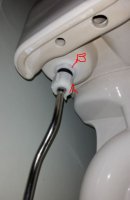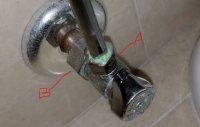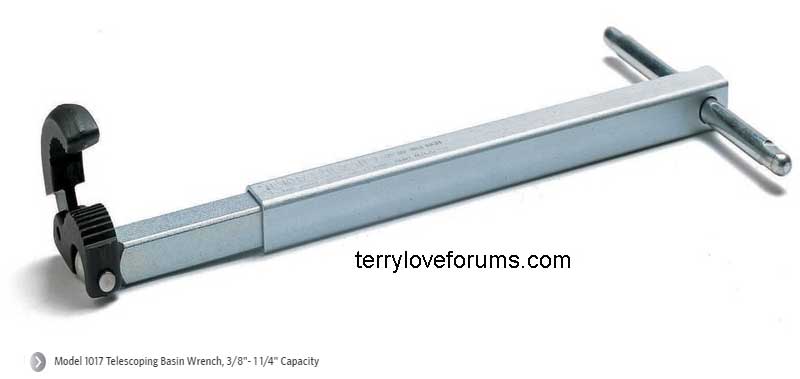bls
New Member
First thanks to everyone on this forum. It is the best!
I spent the better part of today doing a "simple" change-out of a Toto fill valve and flapper.
I am not handy.
Everything went together eventually. However two things are not quite right.
In the picture attached, where the water shut off is, when all was back together, it leaked. I had to move the connector, so I figured that the nut (not sure if that is what it is called) loosened. I carefully tightened it and... it seems to have stopped leaking. I cannot pronounce the patient cured because event the slightest leak there is bad news.
May I ask if there is a DIY to determine, absolutely, that the connection does not leak? If a cell phone is dropped in water there is a piece of paper or something that changes color. Is there something similar out
there to ease my mind or is there another way?
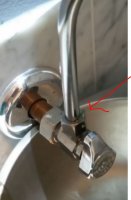
The Toto part also is behaving strangely, leaking from, the fill adjustment area as it fills. It stops when the
fill stops. Just in case anyone knows, I am attaching a picture of that as well.
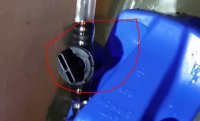
Other than that. Perfect.
I cannot thank everyone enough for reading this. Have a great weekend.
I spent the better part of today doing a "simple" change-out of a Toto fill valve and flapper.
I am not handy.
Everything went together eventually. However two things are not quite right.
In the picture attached, where the water shut off is, when all was back together, it leaked. I had to move the connector, so I figured that the nut (not sure if that is what it is called) loosened. I carefully tightened it and... it seems to have stopped leaking. I cannot pronounce the patient cured because event the slightest leak there is bad news.
May I ask if there is a DIY to determine, absolutely, that the connection does not leak? If a cell phone is dropped in water there is a piece of paper or something that changes color. Is there something similar out
there to ease my mind or is there another way?

The Toto part also is behaving strangely, leaking from, the fill adjustment area as it fills. It stops when the
fill stops. Just in case anyone knows, I am attaching a picture of that as well.

Other than that. Perfect.
I cannot thank everyone enough for reading this. Have a great weekend.

